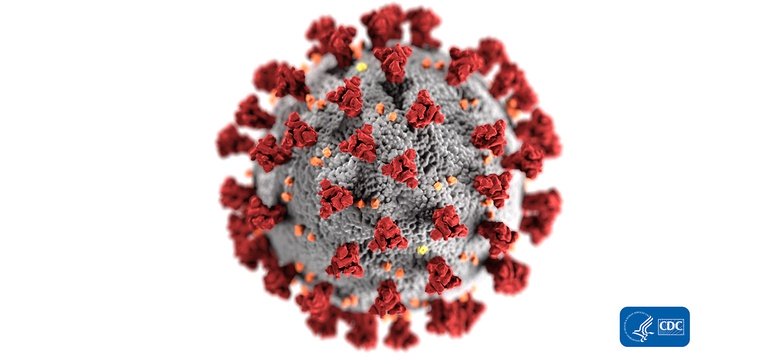Thursday Miscellany

In yesterday’s post, the FEHBlog accurately predicted that the Supreme Court would decide today whether to stay the OSHA ETS vaccination screening program and end the partial stay on the CMS healthcare worker vaccination mandate.
This afternoon, the Supreme Court issued its decision reinstating the nationwide stay of the OSHA ETS and its companion decision ending all stays on the CMS mandate. The decisions came down as many, many pundits predicted.
The Secretary of Labor who oversees OSHA commented that
“We urge all employers to require workers to get vaccinated or tested weekly to most effectively fight this deadly virus in the workplace. Employers are responsible for the safety of their workers on the job, and OSHA has comprehensive COVID-19 guidance to help them uphold their obligation.
“Regardless of the ultimate outcome of these proceedings, OSHA will do everything in its existing authority to hold businesses accountable for protecting workers, including under the Covid-19 National Emphasis Program and General Duty Clause.”
In the OSHA ETS decision, the Supreme Court expressed the key point of administrative law on which the two cases turned:
Administrative agencies are creatures of statute. They accordingly possess only the authority that Congress has provided.
The Court reasoned that Congress had granted CMS the necessary authority to issue its broad mandate but had not granted OSHA the same level of authority.
The cases now return to the courts of appeal for a decision on the merits — 6th Circuit for the OSHA ETS case and 5th Circuit for the CMS mandate case. In the meantime the Court’s decisions on the stays will remain in place.
Given how the Court handled these stay decisions, we have a pretty good idea where the Supreme Court will land should either of those merits decisions return to the Court.Such a return likely only will happen if either appellate court disagrees with the Court’s administrative law conclusion on the merits.
In that regard, Bloomberg Law reports that
The Justice Department will appeal a Louisiana federal court’s ruling that blocked President Joe Biden‘s order for government-contractor workers to get the Covid-19 vaccine.
The U.S. Court of Appeals for the Fifth Circuit will be the third federal appeals court to consider a challenge to the measure. A coalition of three states—Louisiana, Mississippi, and Indiana—sought to block the mandate for companies that do business with the federal government. U.S. District Court Judge Dee Drell of the Western District of Louisiana granted a preliminary injunction in December.
The federal contractor mandate—which won’t be enforced while litigation proceeds—would apply to roughly a quarter of the U.S. workforce, and affect businesses including Lockheed Martin Corp., Microsoft Corp., Alphabet Inc.‘s Google, and General Motors Co.
Appeals are ongoing in the Eleventh and Sixth circuits, respectively, over a nationwide injunction against the measure from a Georgia federal court and a narrower one from a Kentucky federal judge for a coalition that includes Ohio and Tennessee. A Missouri federal court also blocked the executive order, but that ruling has yet to be appealed.
From the Omicron front, David Leonhardt writing in today’s New York Times cautiously senses that the Omicron surge is cresting in our country following Europe’s and South Africa’s leads. “To be clear, the current emergency is not on the verge of ending. Cases appear to be peaking only in places where Omicron arrived early, mostly in the Northeast. In much of the country, cases are still soaring.”
From the Covid vaccine front, the AP reports that
Distrust, misinformation and delays because of the holidays and bad weather have combined to produce what authorities say are alarmingly low COVID-19 vaccination rates in U.S. children ages 5 to 11.
As of Tuesday, just over 17% were fully vaccinated, more than two months after shots became available to the age group. While Vermont is at 48%, California is just shy of 19% and Mississippi is at only 5%.
Vaccinations among the elementary school set surged after the shots were introduced in the fall, but the numbers have crept up slowly since then, and omicron’s explosive spread appears to have had little effect.
The low rates are “very disturbing,” said Dr. Robert Murphy, executive director for the Institute for Global Health at Northwestern University’s Feinberg School of Medicine. “It’s just amazing.”
Parents who hesitate “are taking an enormous risk and continuing to fuel the pandemic,” Murphy said.
From the telehealth front, STAT News informs us that
A handful of virtual care companies are inking new types of contracts that reward them for keeping patients’ cost low and penalize them for overspending — a model known as risk-sharing. It’s a departure from the traditional “fee-for-service” billing process, and a move companies hope could help them get paid for the services they offer in addition to virtual doctors’ appointments, like in-app messaging, medication reminders, and digital health coaching. They’re also betting that embracing risk could endear them to the health plans and employers they depend on for contracts.
Execs from companies like Heartbeat Health and Teladoc say they’re in the very early stages of cementing these contracts. While there’s no clear roadmap for how to structure them, whether they take hold could clarify how virtual care will fit into the brick-and-mortar healthcare system and incentivize those companies to work with traditional providers on prevention, said Jennifer Goldsack, CEO of the Digital Medicine Society. “There is an opportunity to reimagine what health care looks like when it is around the patient,” she told Mohana. Read the full story.
From the healthcare cost front, STAT News tells us that
— Medical cost growth trailed that of other industries in 2021, though rising pressure from the omicron variant could fuel future increases in healthcare costs.
— Prices for goods and services skyrocketed at the fastest pace in four decades, rising 7% between December 2020 and December 2021, according to new data released Wednesday from the Bureau of Labor Statistics.
— By comparison, prices for healthcare services rose roughly 2.5% last year, while the cost of medical care goods rose just 0.4%. However, that slow rate of growth could accelerate as COVID-19 cases persist in 2022 and beyond.
From the miscellany department —
- The Agency for Healthcare Quality and Research’s Acting Director Dr. David Meyers looks back at 2021.
- Biopharma Dive considers five questions facing gene therapy in 2022.
- Fierce Healthcare notes that
As the healthcare system faces significant labor challenges, a new report suggests pharmacists are well positioned to fill some of the critical gaps.
The analysis, conducted by Express Scripts and the Columbia University Mailman School of Public Health, found that a majority of pharmacists see their roles transitioning to more direct patient care responsibilities over the next decade.
- AARP’s Public Policy Institute examines the importance of medication literacy in the medication decision-making of older adults.
While health literacy is widely understood as a quality measure of health care decision making, another related measure calls for increased attention, particularly regarding older adults: medication literacy. Medication literacy is the degree to which individuals can obtain, comprehend, communicate, calculate, and process patient-specific information about their medications to make informed medication and health decisions in order to safely and effectively use their medications, regardless of the mode by which the content by which the content is delivered (i.e., written, oral, or visual).
- Money offers a comprehensive update on the President’s mandate that health plans cover over the counter COVID tests effective on Saturday January 15.













